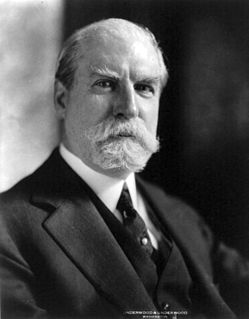Background
After the passage of the National Labor Relations Act (NLRA) in 1935, the National Labor Relations Board (NLRB) found itself attempting to enforce the law against hundreds of employers, most of whom refused to acknowledge the constitutionality of the NLRA or obey the Board's orders. The Board's practice was to have its Economic Division study the issues and report to the Board; order its attorneys in its Review Division to analyze the case and report to the Board; review the transcripts of the field office trial de novo; receive an oral report about the case from the trial examiner; and have the Chief Counsel's staff prepare a draft decision for Board consideration. [2] But in Morgan v. United States , 298 U.S. 468 (1936) and Morgan v. United States , 304 U.S. 1 (1938), the Supreme Court held that parties in quasi-judicial hearings before the government had the right to be presented with the issues the government was considering, present the agency with a statement, review the proposed findings, review any tentative reports, and submit exceptions and argument to the agency before a final determination is made. [3]
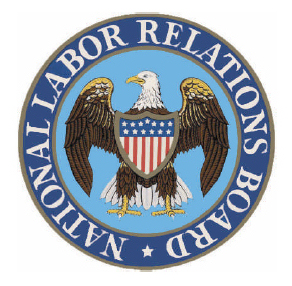
The National Labor Relations Board (NLRB) is an independent agency of the Federal government of the United States with responsibilities for enforcing U.S. labor law in relation to collective bargaining and unfair labor practices. Under the National Labor Relations Act of 1935 it supervises elections for labor union representation and can investigate and remedy unfair labor practices. Unfair labor practices may involve union-related situations or instances of protected concerted activity. The NLRB is governed by a five-person board and a General Counsel, all of whom are appointed by the President with the consent of the Senate. Board members are appointed to five-year terms and the General Counsel is appointed to a four-year term. The General Counsel acts as a prosecutor and the Board acts as an appellate quasi-judicial body from decisions of administrative law judges.
The Steel Workers Organizing Committee (SWOC), a union affiliated with the Congress of Industrial Organizations, had attempted to organize the plants of Republic Steel for several years. On May 26, 1937, members of SWOC to strike Republic Steel. The strike soon spread to Bethlehem Steel, Inland Steel, Jones and Laughlin Steel Company, and Youngstown Sheet and Tube—the so-called "Little Steel" group (because each company was smaller than the giant U.S. Steel). [4] The Little Steel Strike became one of the most famous in American history. Violence quickly engulfed many of the strikes, with both side employing violence. On May 30, 1937, members of the Chicago Police Department shot and killed 10 unarmed union demonstrators near the Republic Steel plant in Chicago in what later became known as the Memorial Day massacre. However, almost 200 SWOC members pleaded guilty to various felony charges (possession of explosives, destruction of property, obstructing passage of the mails, carrying concealed weapons, obstruction of the railroads, etc.) as well. [4]
The Steel Workers Organizing Committee (SWOC) was one of two precursor labor organizations to the United Steelworkers. It was formed by the CIO on June 7, 1936. It disbanded in 1942 to become the United Steel Workers of America.

The Congress of Industrial Organizations (CIO) was a federation of unions that organized workers in industrial unions in the United States and Canada from 1935 to 1955. Created in 1935 by John L. Lewis, who was a part of the United Mine Workers (UMW), it was originally called the Committee for Industrial Organization but changed its name in 1938 when it broke away from the American Federation of Labor. It also changed names because it was not successful with organizing unskilled workers with the AFL.

Republic Steel is an American steel manufacturer that was once the country's third largest steel producer. It was founded as the Republic Iron and Steel Company in Youngstown, Ohio in 1899. After rising to prominence during the early 20th Century, Republic suffered heavy economic losses and was eventually bought out before re-emerging in the early 2000s as a subsidiary. The company currently manufactures Special Bar Quality (SBQ) steel bars and employs around 2,000 people. It is currently owned by Grupo Simec, based in Guadalajara, Mexico.
On June 18, 1937, SWOC filed unfair labor practice charges against Republic Steel for its actions in the Little Steel strike. [3] On April 8, 1938, [3] the NLRB ruled against Republic Steel, ordering the company to reinstate all but 11 strikers on the grounds that the company's "brutal acts of violence" had prompted the union violence. [5] It also ordered Republic Steel to lay off all the replacement workers it had hired. [6] Republic Steel President Tom M. Girdler denounced the decision in a lengthy interview on the front-page of The New York Times the next day, and declared he would not obey it. [7] [8]
An unfair labor practice (ULP) in US labor law refers to certain actions taken by employers or unions that violate the National Labor Relations Act of 1935 29 U.S.C. § 151–169 and other legislation. Such acts are investigated by the National Labor Relations Board (NLRB).
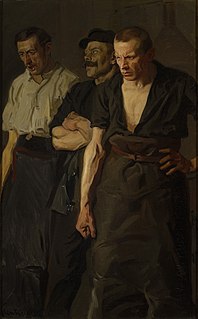
Anti-union violence is physical force intended to harm union officials, union organizers, union members, union sympathizers, or their families. It is most commonly used either during union organizing efforts, or during strikes. The aim most often is to prevent a union from forming, to destroy an existing union, or to reduce the effectiveness of a union or a particular strike action. If strikers prevent people or goods to enter or leave a workplace, violence may be used to allow people and goods to pass the picket line.

Union violence is violence committed by unions or union members during labor disputes. When union violence has occurred, it has frequently been in the context of industrial unrest. Violence has ranged from isolated acts by individuals to wider campaigns of organised violence aimed at furthering union goals within an industrial dispute.
Republic Steel filed a suit in federal court on April 18 to have the NLRB's order overturned. The second Morgan decision was issued on April 25, 1938. On May 16, 1938, the NLRB filed a writ of prohibition and writ of mandamus with the U.S. Supreme Court to have the petition quashed, since the agency was considering withdrawing its decision in light of the Morgan decisions.

The National Labor Relations Act of 1935 is a foundational statute of United States labor law which guarantees the right of private sector employees to organize into trade unions, engage in collective bargaining, and take collective action such as strikes. The act was written by Senator Robert F. Wagner, passed by the 74th United States Congress, and signed into law by President Franklin D. Roosevelt.
National Labor Relations Board v Jones & Laughlin Steel Corporation, 301 U.S. 1 (1937), was a United States Supreme Court case that upheld the constitutionality of the National Labor Relations Act of 1935. The case represented a major expansion in the Court's interpretation of Congress's power under the Commerce Clause and effectively spelled the end to the Court's striking down of New Deal economic legislation.
Lechmere, Inc. v. National Labor Relations Board, 502 U.S. 527 (1992), is a US labor law case of the Supreme Court of the United States on union rights and private property rights. It forbids nonemployee union organizers from soliciting support on private property unless no reasonable alternatives exist.
NLRB v. J. Weingarten, Inc., 420 U.S. 251 (1975), is a US labor law case decided by the Supreme Court of the United States. It held that employees in unionized workplaces have the right under the National Labor Relations Act to the presence of a union steward during any management inquiry that the employee reasonably believes may result in discipline.
NLRB v. Truck Drivers Local 449, 353 U.S. 87 (1957), is an 8-0 decision by the Supreme Court of the United States in which the Court held that a temporary lockout by a multi-employer bargaining group threatened by a whipsaw strike was lawful under the National Labor Relations Act (NLRA), also known as the Taft-Hartley Act.
NLRB v. Mackay Radio & Telegraph Co., 304 U.S. 333 (1938), is a US labor law case of the US Supreme Court which held that workers who strike remain employees for the purposes of the National Labor Relations Act (NLRA). The Court granted the relief sought by the National Labor Relations Board, which sought to have the workers reinstated by the employer. However, the decision is much better known today for its obiter dicta in which the Court said that an employer may hire strikebreakers and is not bound to discharge any of them if or when the strike ends.
Hoffman Plastic Compounds, Inc. v. National Labor Relations Board, 535 U.S. 137 (2002), is a US labor law decision, by 5 to 4, of the Supreme Court of the United States, which denied an award of back pay to an undocumented worker, Jose Castro, who had been laid off for participating in a union organizing campaign at Hoffman Plastics Compounds plant along with several other employees. The case was originally filed against Hoffman by Dionisio Gonzalez, an organizer with the United Steelworkers.
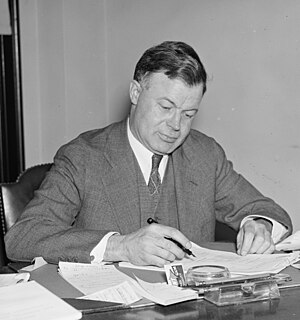
Joseph Warren Madden was an American lawyer, judge, civil servant, and educator. He served as a Judge of the United States Court of Claims and was the first Chairman of the National Labor Relations Board. He received the Medal of Freedom in 1947.
New Process Steel, L.P. v. NLRB, 560 U.S. 674 (2010), is a US labor law case of the United States Supreme Court holding that the National Labor Relations Board (NLRB) cannot make decisions without a quorum of three members.
Ford Motor Co. v. NLRB, 305 U.S. 364 (1939), is an 8-to-0 decision by the Supreme Court of the United States which held that an administrative agency of the United States government, seeking enforcement of its orders, cannot withdraw its petition or the transcript of the administrative hearing once these have been submitted to the appropriate court. Whether the agency should be permitted to withdraw its petition is a decision for the court of appeals, the Supreme Court said.
National Labor Relations Board v. Fansteel Metallurgical Corporation, 306 U.S. 240 (1939), is a US labor law case of the United States Supreme Court case in which the Court held that the National Labor Relations Board had no authority to order an employer to reinstate workers fired after a sit-down strike, even if the employer's illegal actions triggered that strike.
NLRB v. Columbian Enameling & Stamping Co., 306 U.S. 292 (1939), is a US labor law case where the US Supreme Court held 5-to-2 that the National Labor Relations Act required decisions of the National Labor Relations Board (Board) to be based on substantial evidence. The Supreme Court overturned a ruling of the Board for not being based on substantial evidence. The Court also held that only the representative of the workers could issue collective bargaining proposals under the law, and that proposals transmitted by a third party did not trigger the Act's protections or duties.
National Labor Relations Board v. Sands Manufacturing Co., 306 U.S. 332 (1939), is US labor law case, decided by a majority of 5 to 2 by the US Supreme Court, which overturned a decision by the National Labor Relations Board because it was not supported by substantial evidence. The Court defined collective bargaining under the National Labor Relations Act to mean that proposals and responses to proposals were pending, and that future meetings were being planned. Absent such conditions, bargaining was not occurring. The Court also held that an employer did not violate the Act if it chose to deal with the employees on an individual basis.
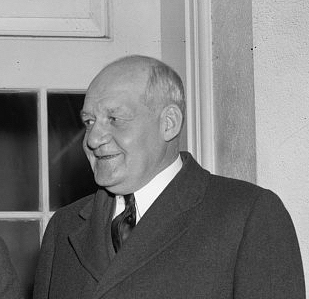
Harry Alvin Millis was an American civil servant, economist, and educator and who was prominent in the first four decades of the 20th century. He was a prominent educator, and his writings on labor relations were described at his death by several prominent economists as "landmarks". Millis is best known for serving on the "first" National Labor Relations Board, an executive-branch agency which had no statutory authority. He was also the second chairman of the "second" National Labor Relations Board, where he initiated a number of procedural improvements and helped stabilize the Board's enforcement of American labor law.
Guy Otto Farmer was an American lawyer and civil servant. He was Chairman of the United States National Labor Relations Board from July 1953 to August 1955. After leaving government service, he represented the Bituminous Coal Operators Association, the collective bargaining arm of the bituminous coal mining industry in the United States.
Epic Systems Corp. v. Lewis, 584 U.S. ___ (2018), was a case decided by the Supreme Court of the United States on how two federal laws, the National Labor Relations Act (NLRA) and the Federal Arbitration Act (FAA), relate to whether employment contracts can legally bar employees from collective arbitration. The Supreme Court had consolidated three cases, Epic Systems Corp. v Lewis, Ernst & Young LLP v. Morris (16-300), and National Labor Relations Board v. Murphy Oil USA, Inc. (16-307). In a 5-4 decision issued in May 2018, the Court ruled that arbitration agreements requiring individual arbitration are enforceable under the FAA, regardless of allowances set out within the NLRA.
Emporium Capwell v. Western Addition, 420 U.S. 50 (1975), was a United States Supreme Court case. The court reversed and remanded the Court of Appeals ruling. The Supreme Court ruled on the basis of the Civil Rights Act of 1964 and the National Labor Relations Act of 1935 (NLRA).








